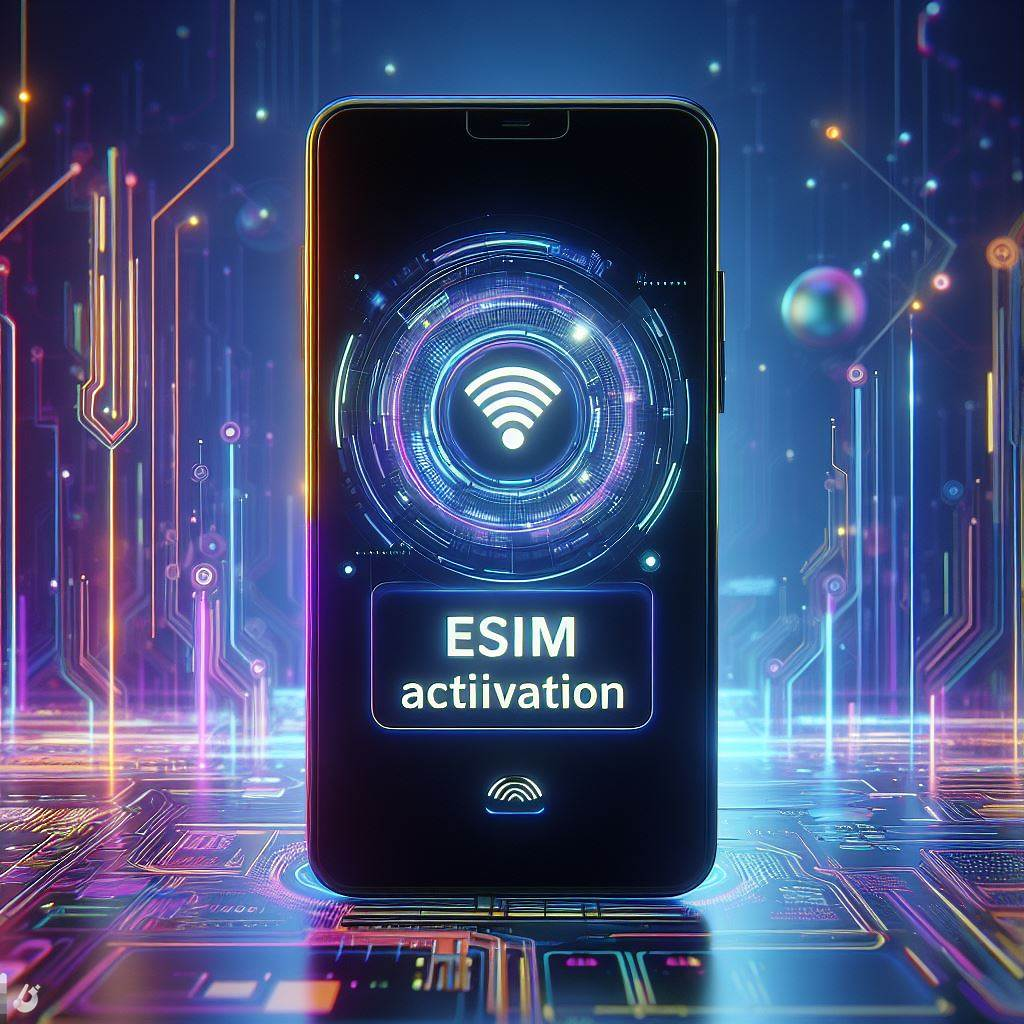The Power of Dual eSIMs
Author
Uliana Aitakayeva
Published on
Dec 6 2023

Unraveling Dual eSIMs: Decoding the Feature

Activating dual eSIMs on your smartphone for enhanced connectivity.
In the swiftly evolving realm of mobile technology, the introduction of dual eSIM features has transformed our approach to connectivity management on devices. This groundbreaking functionality, evident in numerous modern smartphones like the iPhone XS, iPhone XS Max, and iPhone XR, signifies a paradigm shift. It enables users to seamlessly utilize the capabilities of two active eSIMs within a single device, eliminating the need for physical SIM cards and embracing the advantages of embedded SIM technology.
Dual eSIM devices essentially enable users to have more than one SIM card without the need for a physical SIM card slot. This feature is particularly advantageous for those who wish to manage cellular data switching seamlessly or maintain separate phone numbers for personal and professional use.
Understanding the Basics: Dual eSIMs and Their Functionality
In a conventional dual SIM device, users typically find two physical SIM card slots. This design is a hallmark of many dual SIM devices, allowing users to easily switch between two separate mobile connections on a single device.
The dual eSIM feature elevates this capability by enabling users to concurrently manage two active eSIMs. This translates to the ability to have two phone numbers, engage with two distinct mobile carriers, and even maintain two different data plans simultaneously on a single device, particularly in the context of dual SIM phones operating in dual SIM mode.
The significance of dual eSIM mode becomes evident as users can easily toggle between two active eSIMs, facilitating efficient call and text preferences, and managing cellular data numbers with ease. This flexibility extends to receiving calls and text messages on the number of your choice.
Effortless Integration: Setting Up Dual eSIMs for Enhanced Connectivity

A quick and easy method for setting up dual eSIMs for enhanced connectivity.
To set up and activate a dual eSIM feature on your device, start by confirming that your device supports dual eSIM functionality. Check with your mobile carrier to ensure they support eSIM technology and offer services for dual eSIMs.
Access your device settings, typically represented by a gear or cogwheel icon on your home screen. Within the settings menu, find the section related to cellular or mobile data settings.
Initiate the setup process for the first eSIM by scanning a QR code provided by your carrier or manually entering the necessary details. Follow the on-screen prompts to complete the activation. If your device supports dual eSIM modes, select the preferred cellular plan for the first eSIM.
Once the first eSIM is activated, repeat the process to activate the second eSIM. Scan the QR code or enter the details provided by your carrier, following the on-screen instructions.
Customize your preferences by exploring the settings. This may include setting up call and text preferences, designating a preferred eSIM for specific activities, and managing data plans.
Confirm that both eSIMs are active and operational by checking the signal indicators. Utilize the device settings to manage your dual eSIMs efficiently, such as switching between eSIMs based on your preferences or adjusting data plans.
Always refer to the user manual or documentation provided by your device manufacturer for specific instructions tailored to your device model and operating system.
Navigating Settings and Preferences: Managing Multiple eSIMs
In the settings app of dual eSIM devices, users can tap the cellular plan label to choose the preferred cellular plan for calls and data. Additionally, the capability to receive phone calls and text messages on specific numbers enhances the overall customization of the user experience.
For those using dual SIM standby (DSDS) devices, it is crucial to understand the concept of managing cellular data numbers. This feature allows users to designate a preferred cellular plan for data usage, providing granular control over their network coverage and data plans.
Unlocking Connectivity: The Advantages of Dual eSIM Utilization

Unleashing the advantages of dual eSIM utilization.
In the dynamic landscape of modern mobile connectivity, the utilization of dual eSIMs emerges as a groundbreaking feature, redefining the way users manage their digital connections. This innovative approach allows individuals to harness the power of two active eSIMs within a single device, unlocking a plethora of advantages that cater to diverse communication needs.
Effortless Connectivity Management: One of the primary benefits of employing dual eSIMs is the seamless management of connectivity. Users can effortlessly switch between two active eSIMs, each assigned to a specific phone number or mobile carrier, all without the need for a physical SIM card swap. This flexibility proves invaluable for those who wish to maintain separate lines for personal and professional use or toggle between local and international numbers with ease.
Enhanced Data Plans and Cellular Data Switching: Dual eSIM functionality empowers users to explore and leverage multiple data plans concurrently. This is particularly advantageous for individuals who require distinct plans for various purposes, such as work and travel. The ability to manage cellular data switching between eSIMs ensures an uninterrupted and efficient data experience, enhancing overall connectivity.
Global Connectivity Without Physical Constraints: For frequent travelers, dual eSIMs eliminate the need to navigate the intricacies of physical SIM cards when switching between different mobile carriers in various regions. This global eSIM capability simplifies connectivity management, allowing users to tap into international networks effortlessly and stay connected without the constraints of physical SIM card limitations.
Streamlined Call and Text Preferences: The dual eSIM feature enables users to customize their call and text preferences with precision. Whether receiving calls or messages on a specific number, users have granular control over their communication preferences, enhancing the overall user experience and ensuring efficient communication management.
Adaptability to Changing Scenarios: As the mobile industry continues to evolve, dual eSIMs offer users adaptability to changing scenarios. With the capacity to manage multiple eSIM profiles, individuals can easily navigate through diverse mobile network coverages, data plans, and preferred cellular plans, ensuring they are equipped to handle various connectivity requirements as they arise.
Practical Implications: Dual eSIMs in Everyday Use
The advantages of dual eSIMs go beyond merely having two active lines on one device. With the increasing prevalence of eSIM-only smartphones, managing multiple eSIMs has become a norm. This feature is particularly beneficial for users who travel frequently, as it enables them to tap into global eSIM capabilities without the hassle of switching physical SIM cards.
Modern smartphone models equipped with dual eSIM functionality, allow users to navigate settings and preferences seamlessly. Whether you prefer to use dual SIMs for personal and professional purposes or utilize two eSIMs for diverse data plans, the dual eSIM feature offers unparalleled flexibility.
Connectivity Unleashed: Paving the Way for the Future of Digital Connections

Exploring the future with unleashed digital connectivity.
As the mobile industry continues to advance, dual eSIM features are becoming a standard offering in most smartphones. This evolution brings us closer to the vision of one device seamlessly managing multiple SIMs, unlocking a new era of connectivity and communication. Whether it's receiving calls on a preferred number, managing data plans efficiently, or customizing call and text preferences, dual eSIMs have transformed our phones into dynamic hubs of connectivity, reflecting the ever-evolving nature of our digital lives.
FAQs
- How to set up and activate a dual eSIM on your device?
The exact process may vary depending on your device, but generally, you need to go to the settings of your device and find the eSIM section. From there, follow the prompts to add second sim, and activate your dual eSIM profiles. You will typically need to scan a QR code provided by your carrier to activate cellular data number for the eSIM.
- How Many eSIMs Can I Add to My Device?
Since an electronic SIM works 100% digitally, the device can have multiple sims be installed without physical limitations (like the SIM tray for example). In other words, how many eSIMs do you have available will depend on your device manufacturer or storage.
- Why can't I see the option to set up dual eSIMs on my phone?
Not all smartphones support dual eSIM functionality. Ensure that your device is compatible by checking with the manufacturer.
- Why am I experiencing connectivity issues with one of my eSIM profiles?
Try toggling the eSIM profile on and off in the settings app. If the issue persists, contact your network provider for assistance.
- What should I do if I accidentally delete one of my eSIM profiles?
If you have a backup of your eSIM profile, you can restore it. Otherwise, contact your mobile carrier to request assistance in recovering the deleted profile.
- Can I switch between eSIM profiles during a call or data session?
While some devices may allow this, it is recommended to switch eSIM profiles when you are not actively using voice or data services to avoid interruptions.
- Why am I unable to use certain features, such as roaming, on one of my eSIM profiles?
Some carriers may have restrictions on the number to use or certain features for eSIM profiles on preferred cellular plan. Contact your network provider to inquire about the availability of specific features on your cellular plan for eSIM profiles.
- What should I do if I encounter an error message when trying to activate an eSIM?
Double-check the information you entered during the activation process. If the error persists, contact your mobile carrier for troubleshooting assistance.
- How do I manage multiple eSIMs?
It is possible for your phone to activate multiple plans at once. When you activate multiple plans on one phone at once you can choose between a single plan (one eSIM) or a second and a personal plan, or a work plan (multiple eSIMs).
- Can I run 2 eSIMs at the same time?
The number of eSIM profiles that is activated in your phone can vary depending on your smartphone's model. Typically there can be between 5-7 active eSIMs (for iPhone models) or up to 2 (if you use Android phones).
- Can I have dual SIM with eSIM?
It is possible for a smartphone to use dual SIM or eSIM options depending upon how much of a combination dual SIMs it has (e.g. nano-SIM and eSIM). Most iPhone models and Android phones have eSIM and nano-SIM combinations.
Uliana Aitakayeva
[email protected]Uliana Aitakayeva is a tech-savvy traveler with a deep understanding of eSIM technology. As a telecom engineer, she offers practical advice on using eSIMs worldwide. Her posts focus on cost-effective strategies, carrier insights, and regional tips. When not traveling, Uliana enjoys photography and exploring local cuisines.
